Best stove fans – we advise how to buy a stove fan, so you can maximise the benefits of your log burner
Circulate heat produced by your log burner with one of the best stove fans to minimise cold spots and save on your energy bills
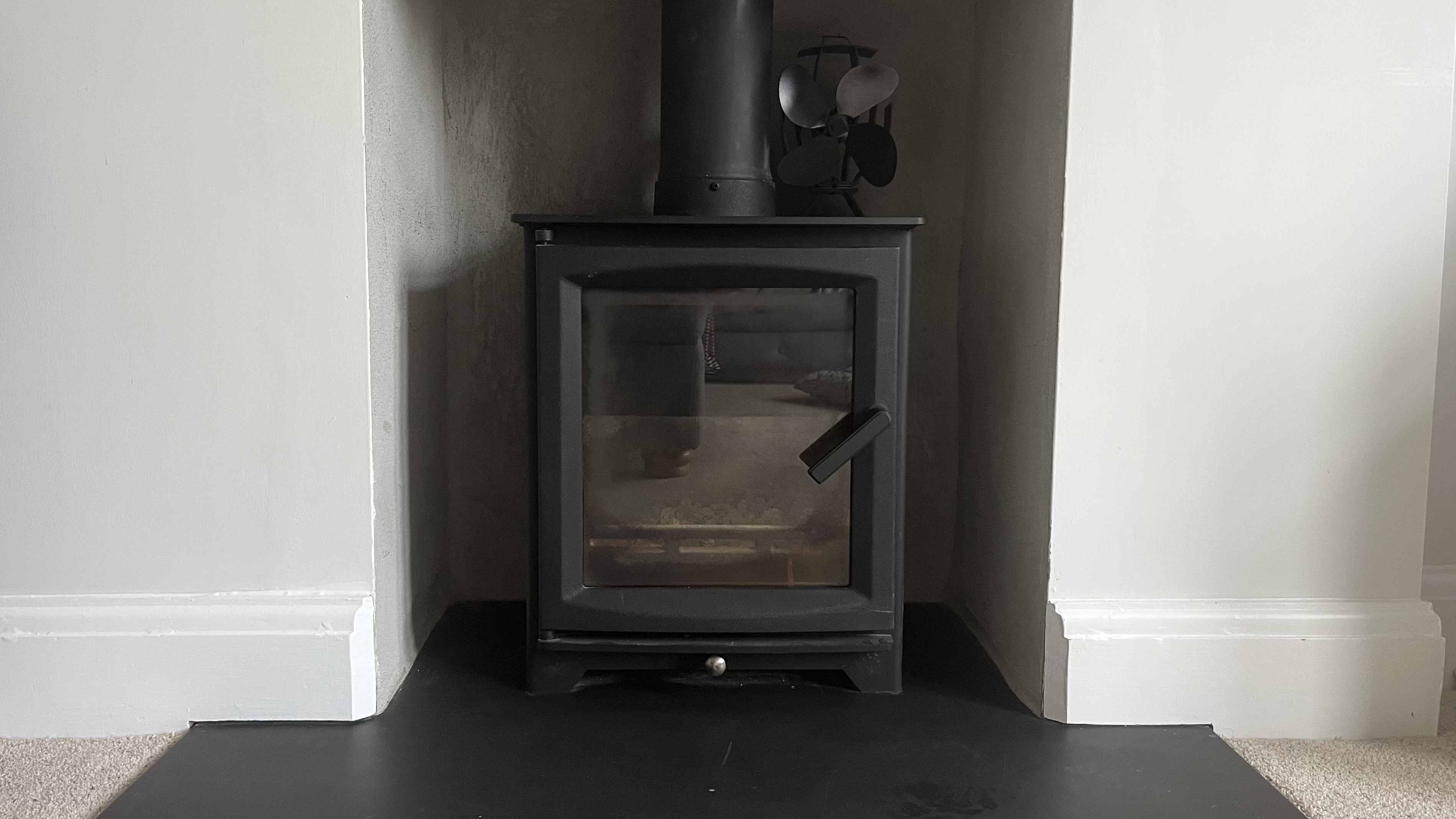
The best stove fans are a must-have for circulating warm air around a room, avoiding cold spots and saving energy bills. There's no need to plug them in; just pop them on top of the log burner and you'll start to feel the benefits within minutes.
Granted, there is a lot of choice. We know how tricky it can be to work out which stove fan will be better suited to your living space. They are available with up to six blades, boast temperature gauges, incorporate handles and have subtle differences in the overall design. With prices ranging from £10 up to £50, knowing what you're going to be getting for your money will be important information – especially if you've got a restricted budget.
This is why we have checked the specifications, read product reviews, caught up with some experts and applied our own knowledge. For such a small item, they can certainly be a big decision. Especially after your initial investment in a log burning stove: you'll want the two to be perfectly matched so that you can effectively heat a room in the house, and put off turning on the heating in the house a little longer.
What is a stove fan?
Stove fans work to maximise the heat given out by stoves, helping it to project further out and around the space. They are designed to sit on top of the stove and circulate the warm air, distributing it evenly around the space. What's more, because they are powered by the heat generated by the stove, they require no power source or batteries.
Sound good? Read on for our top picks of the very best stove fans around to help you decide on a model that is perfect for your stove and your home.
The Quick List
Not much time to spare? Here's a quick overview of the stove fans on this list, along with handy quick links that allow to you skip down the page to get right into a more detailed review of the particular stove fan that you like the look of.
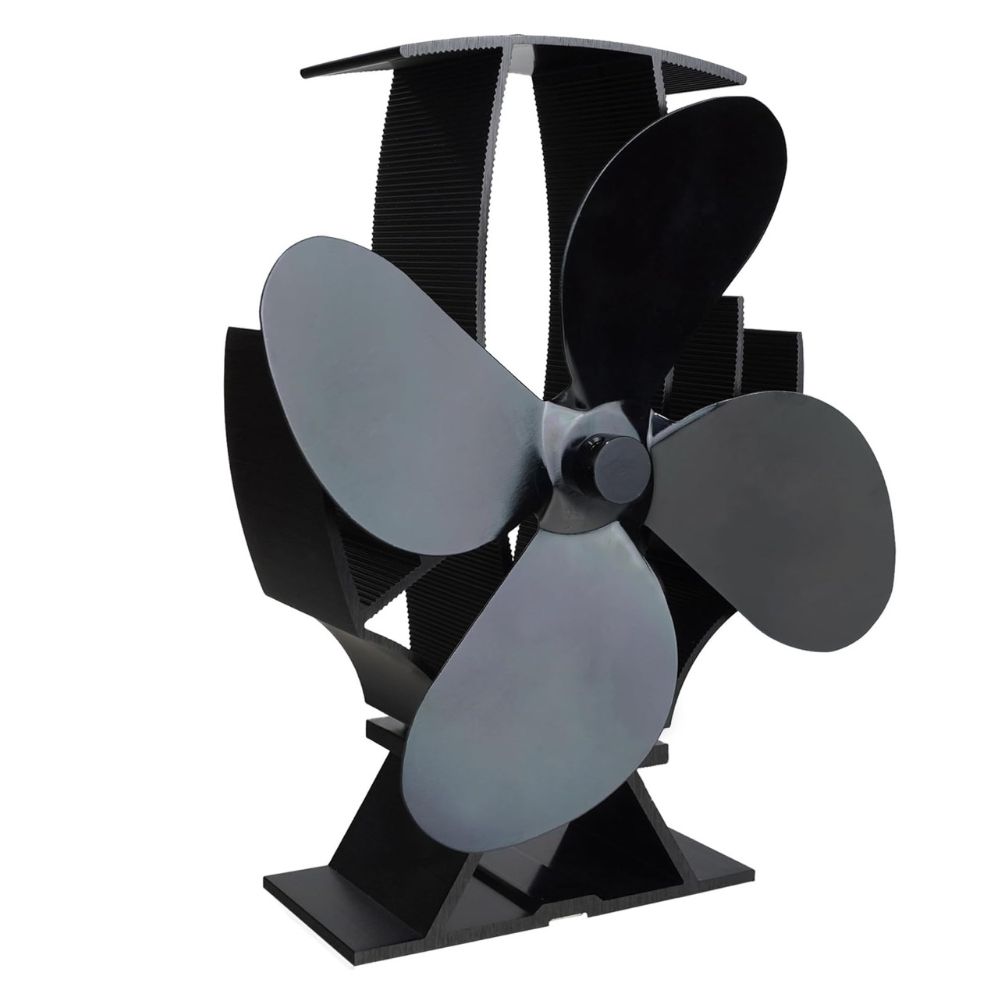
The Forest Master SF Mini Stove Fan is our top pick for its robustness, effectiveness and quiet operation. It's ideal for smaller stoves and is available in three colours – Black, Steel Grey and Bronze – so it can either be a discreet addition or a statement item to your log burner.
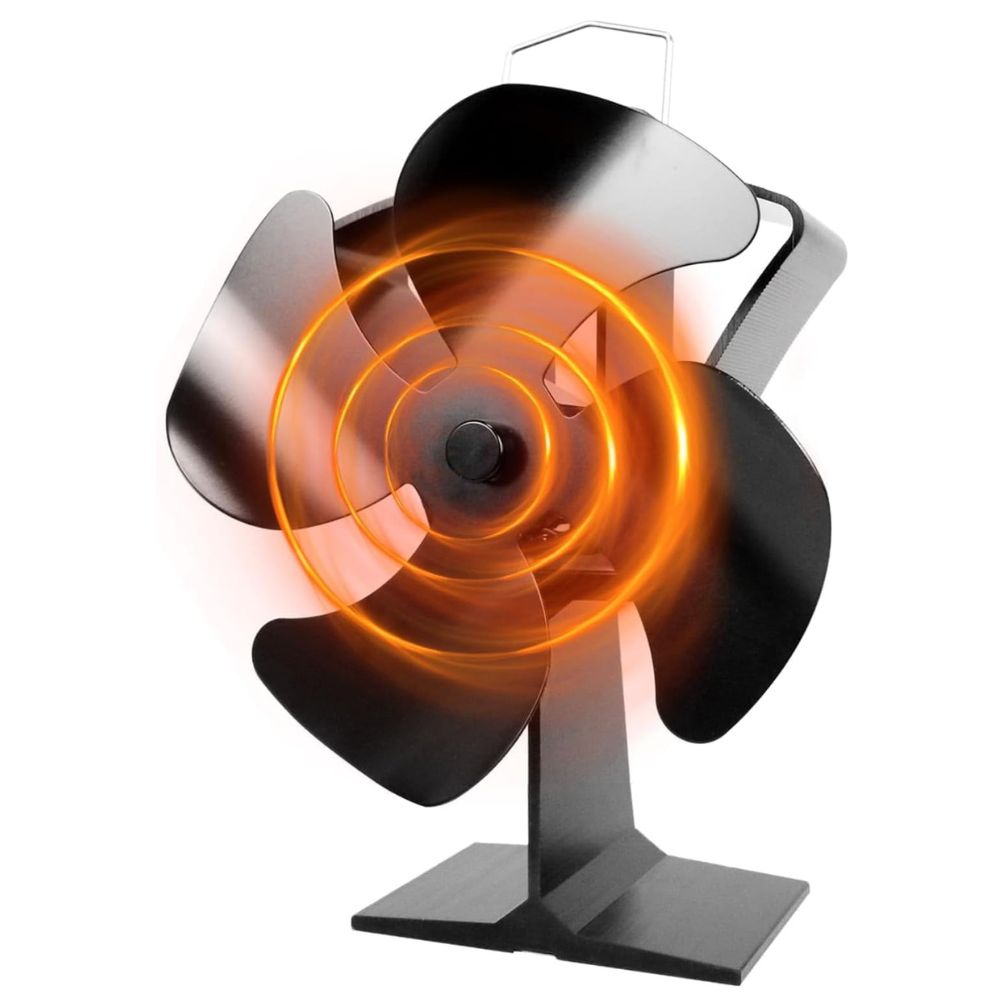
This is an excellent, compact stove fan, perfect for small stoves. Operation is quiet and the design is discreet. It has a lower airflow range than some of the models – something for those with larger rooms to note – but that shouldn't be a problem for those with smaller spaces.
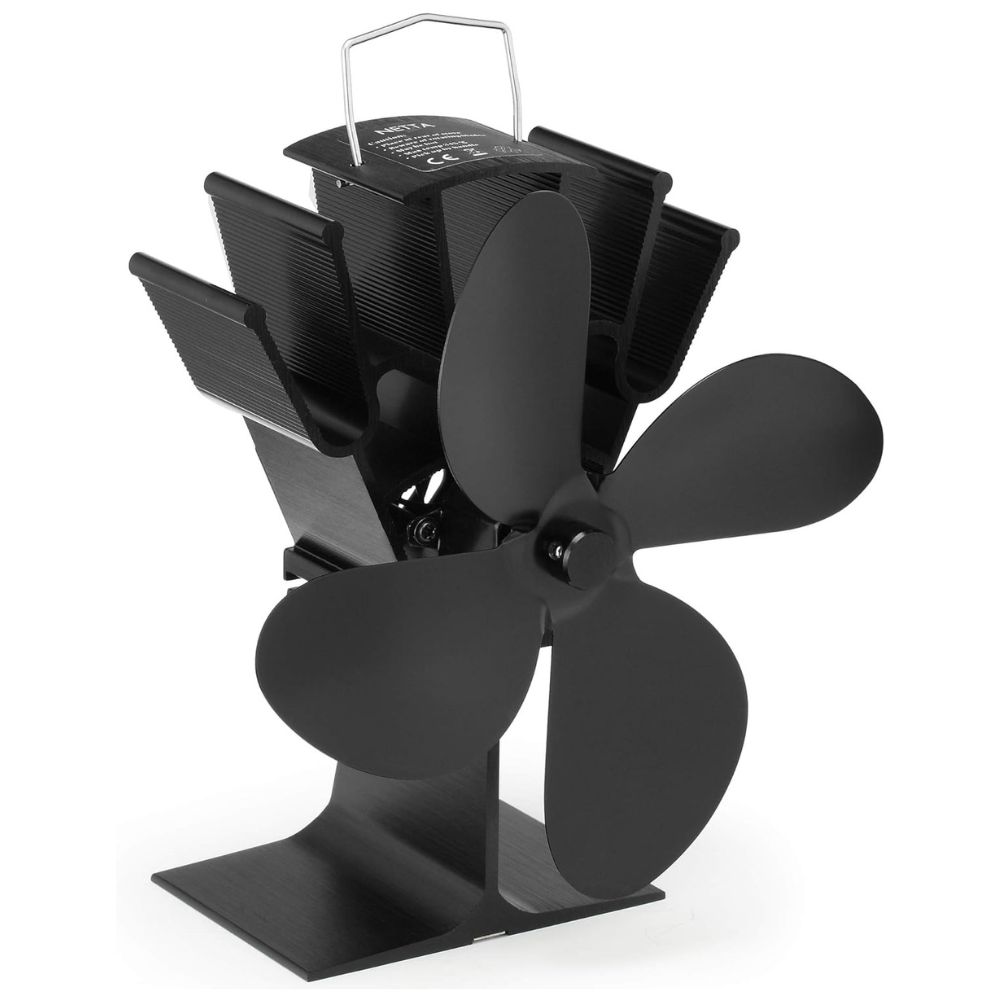
Cost-effective, simple, yet surprisingly effective – plus it comes complete with a highly useful and accurate temperature gauge. Users love how quiet it is as well as its efficient heat distribution capabilities – all despite its attractive neat, compact proportions.
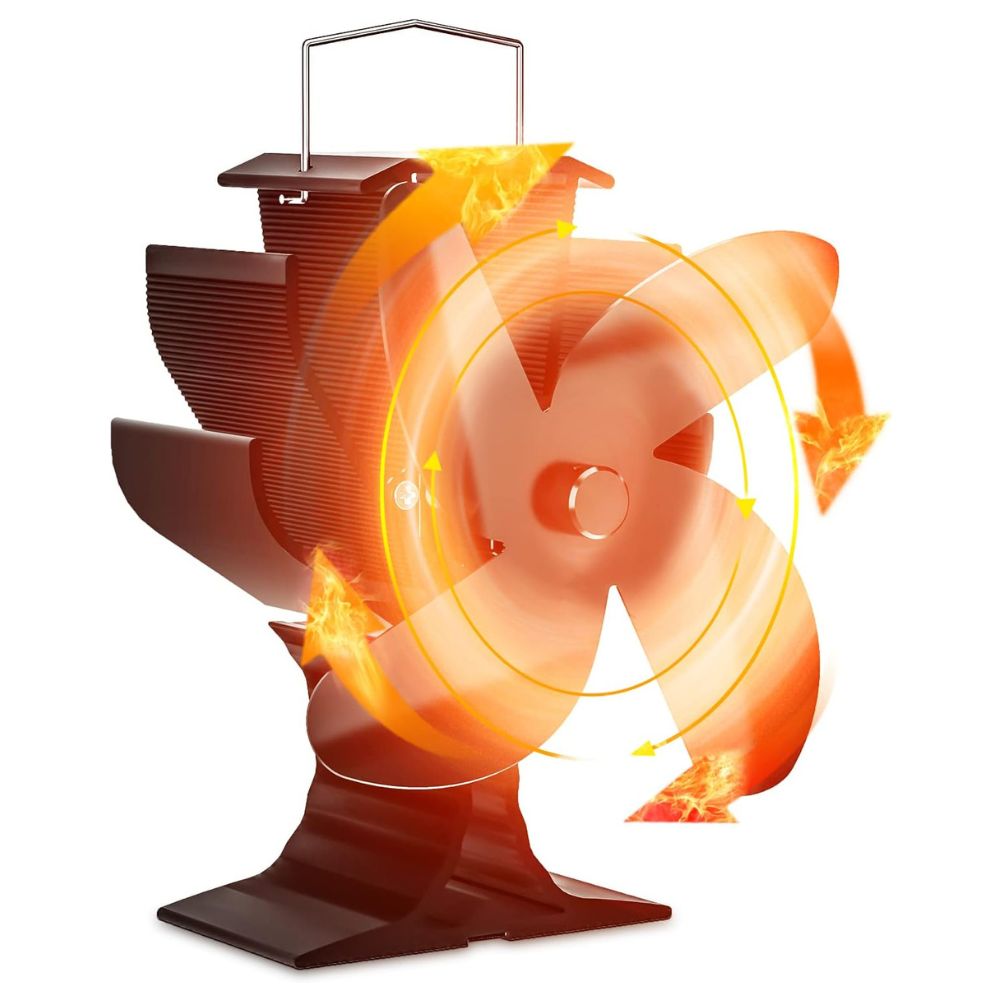
This six-blade stove fan really does pack a punch in terms of its ability to distribute heat, yet is still quiet while running at below 25 decibels. This model measures 20cm in height which is a little larger than some other models. It is also great value for money.
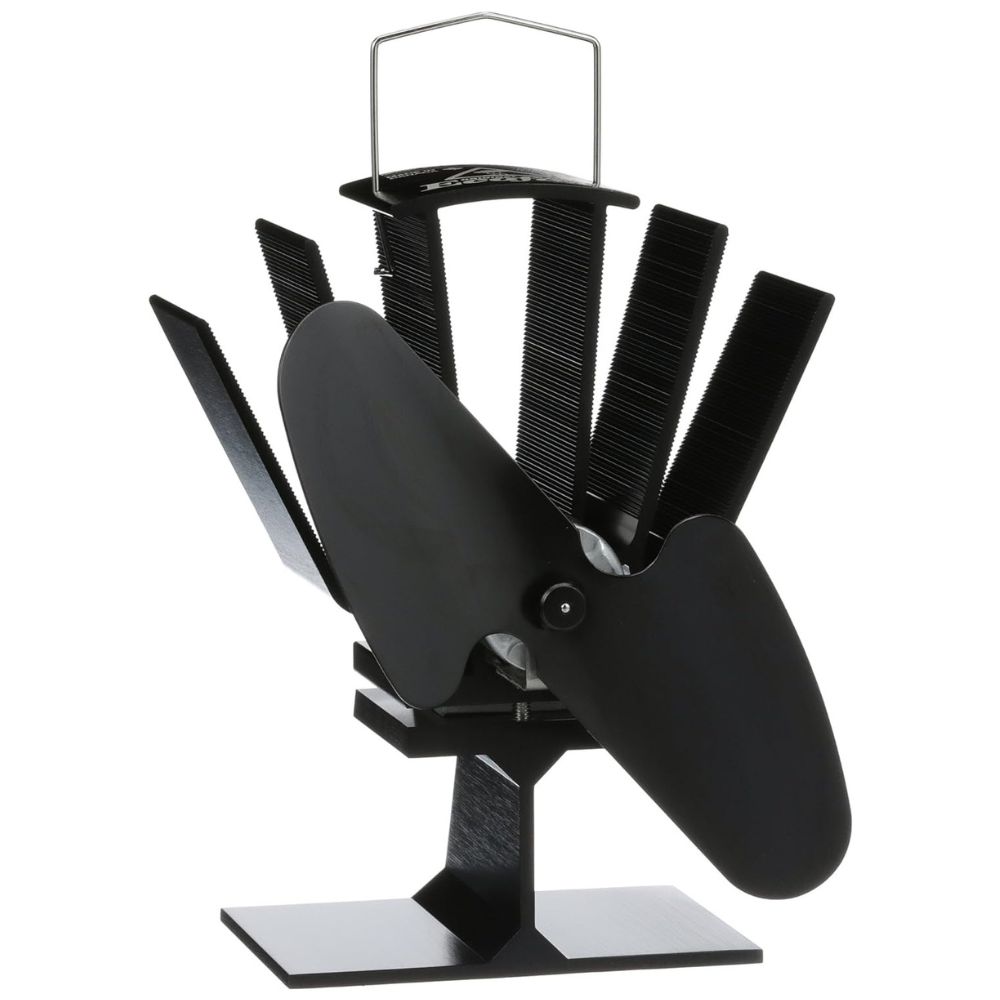
A truly tiny and neat stove fan that is ideal for anyone struggling to find a model that is suitable for an awkward, tight space above their stove. Despite its super small size, the Ecofan Original Mini has a highly impressive maximum operating temperature of 345˚C.
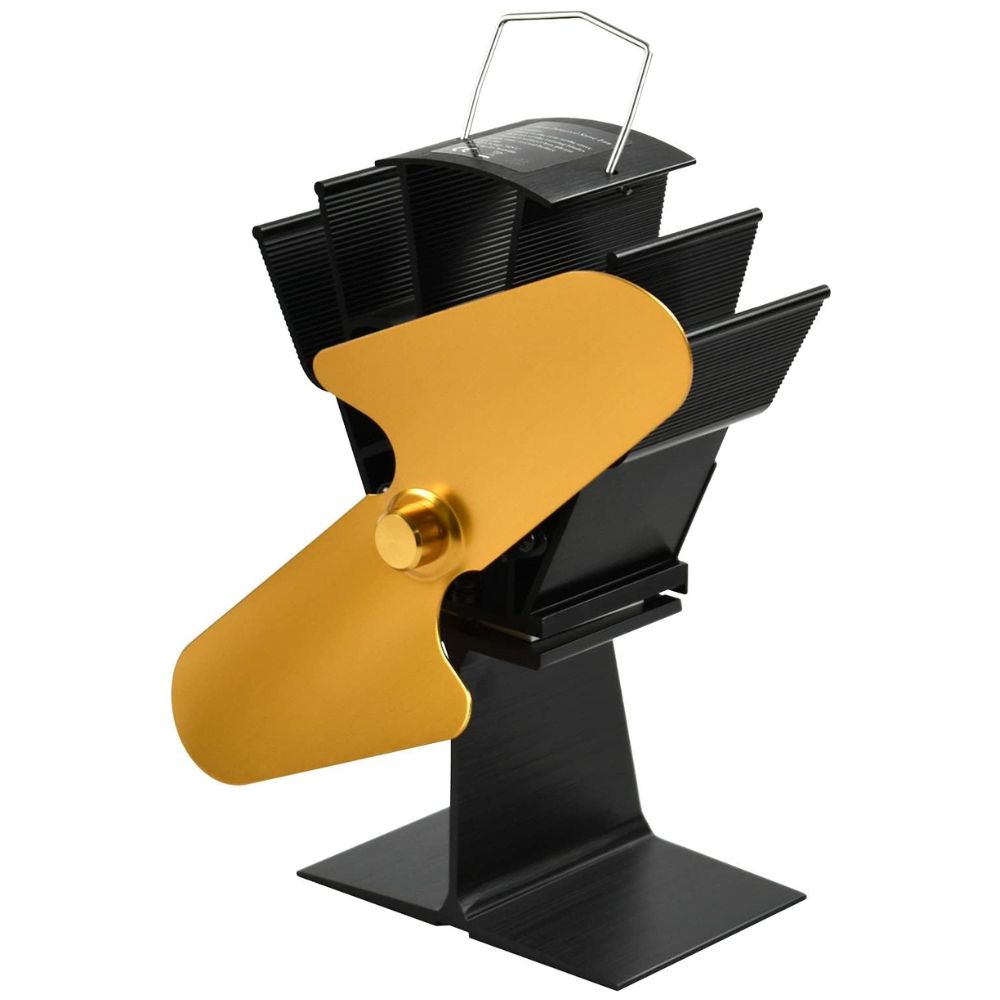
The Sterling Ventures Fireplace Heat Powered Stove Fan is an eye-catching, stylish black and gold stove fan. Perfect for anyone who is looking to add a stylish little touch and draw attention towards their stove at the same time as maximising its efficiency.
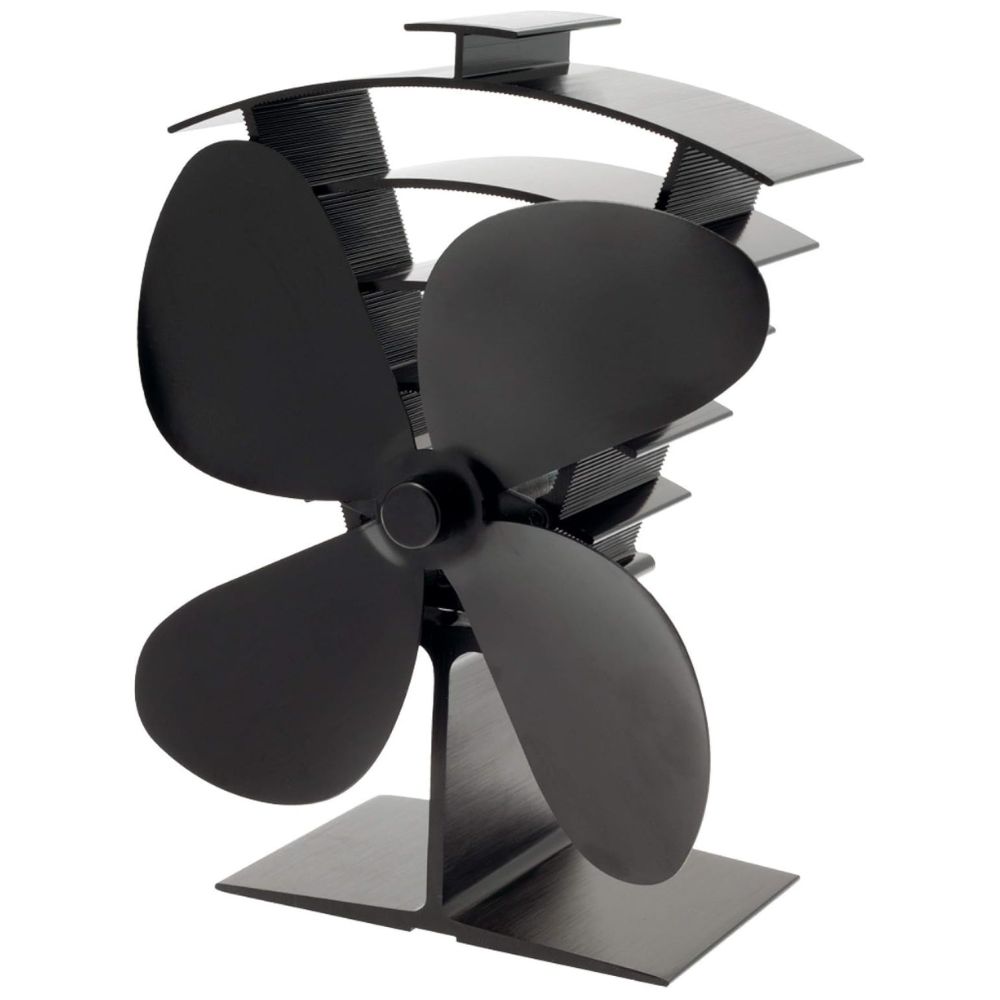
There are several reasons why this fan has made it on to our list. First, it is really effective when it comes to heat distribution. Then there is the fact that it is compact yet reassuringly robust and, finally, it is nice and quiet even when running at full pelt.
The best stove fan overall
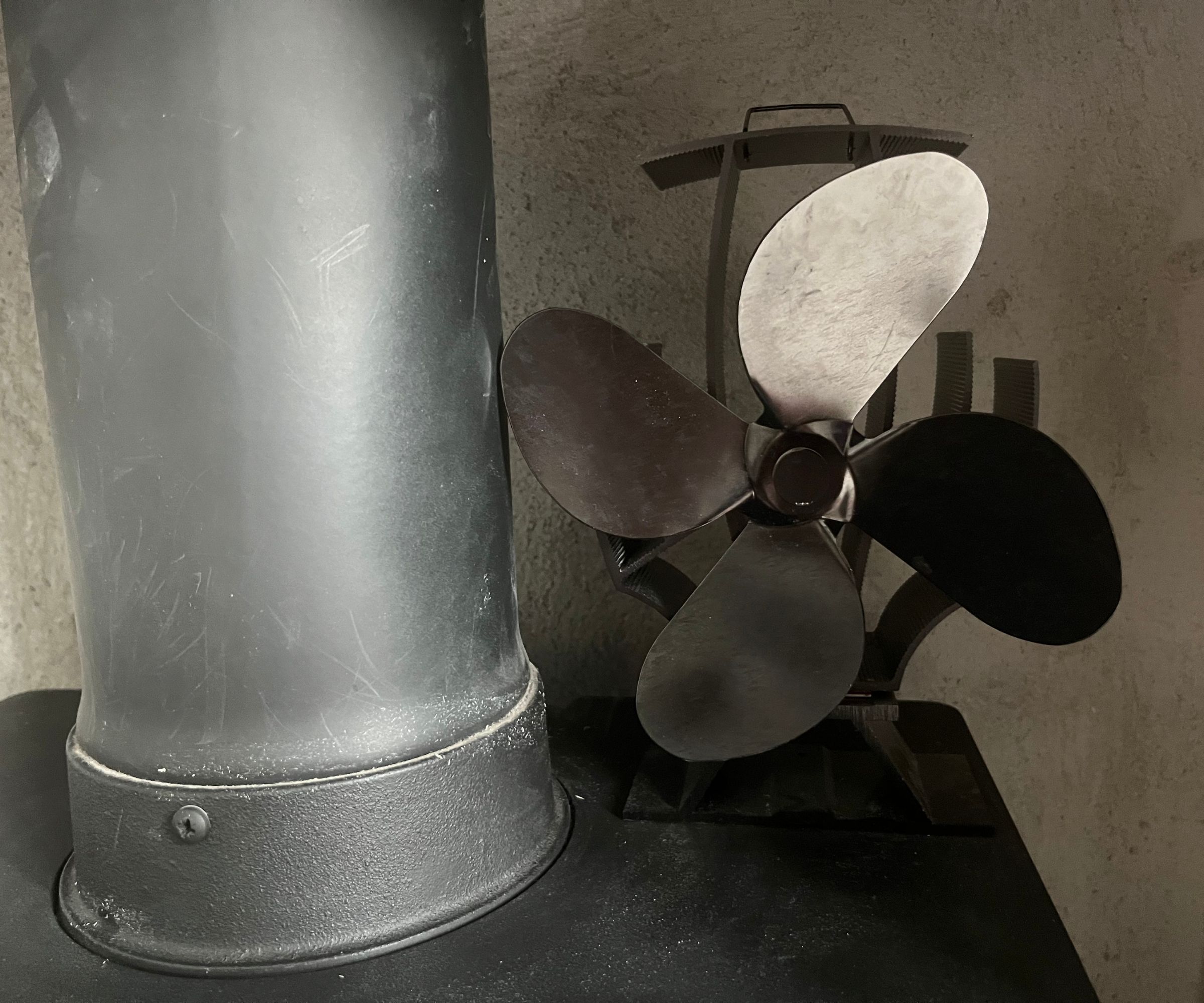
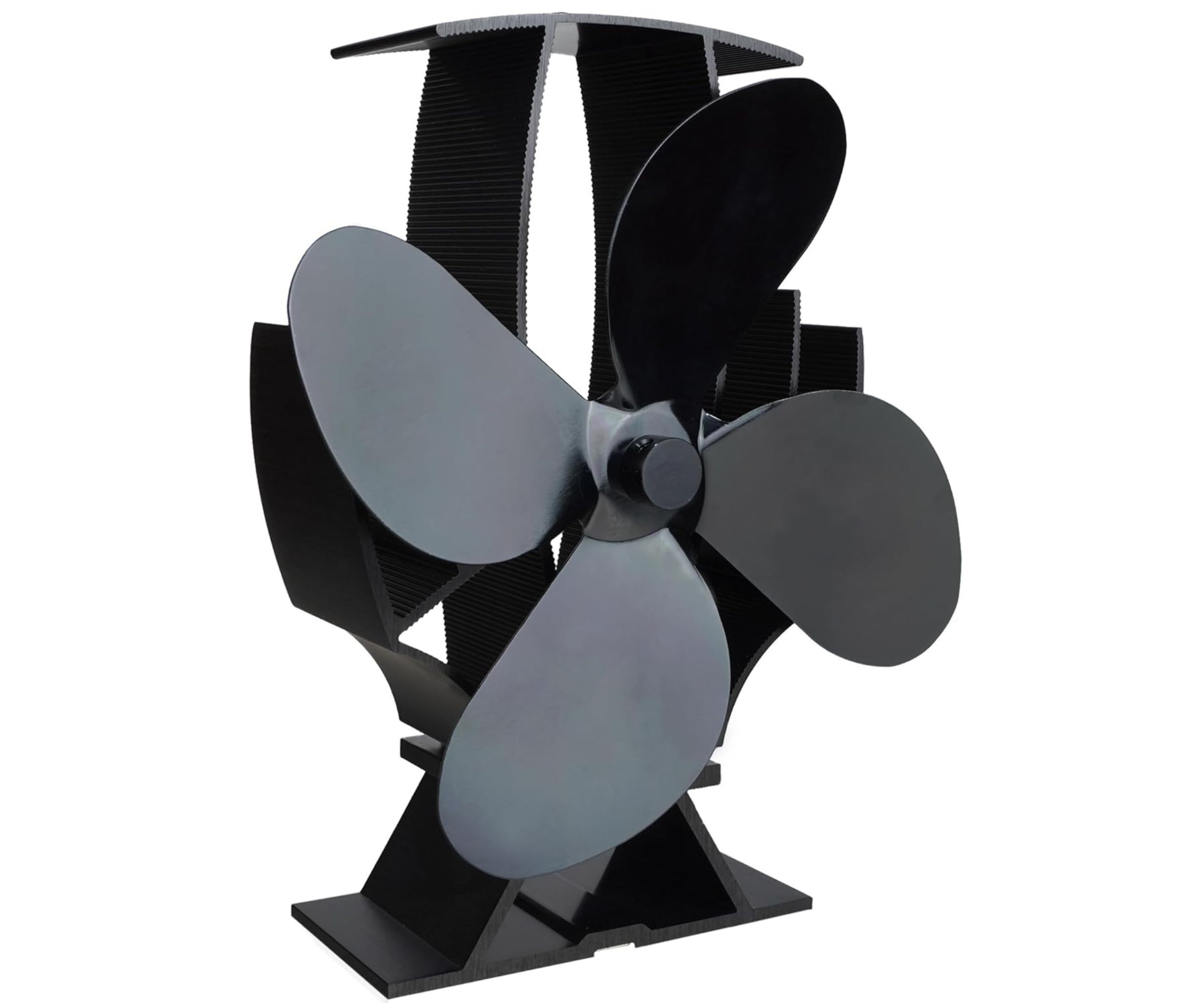
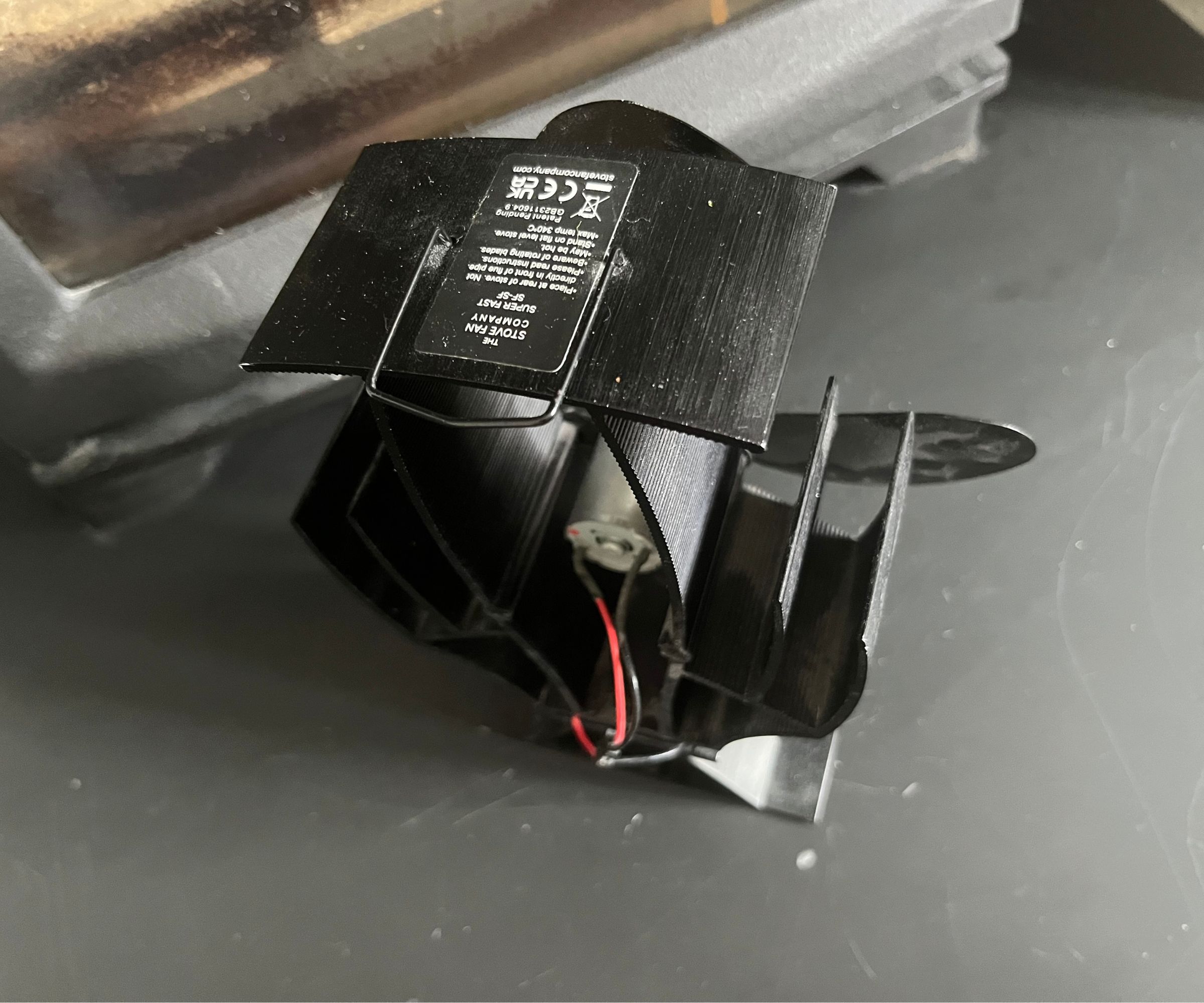
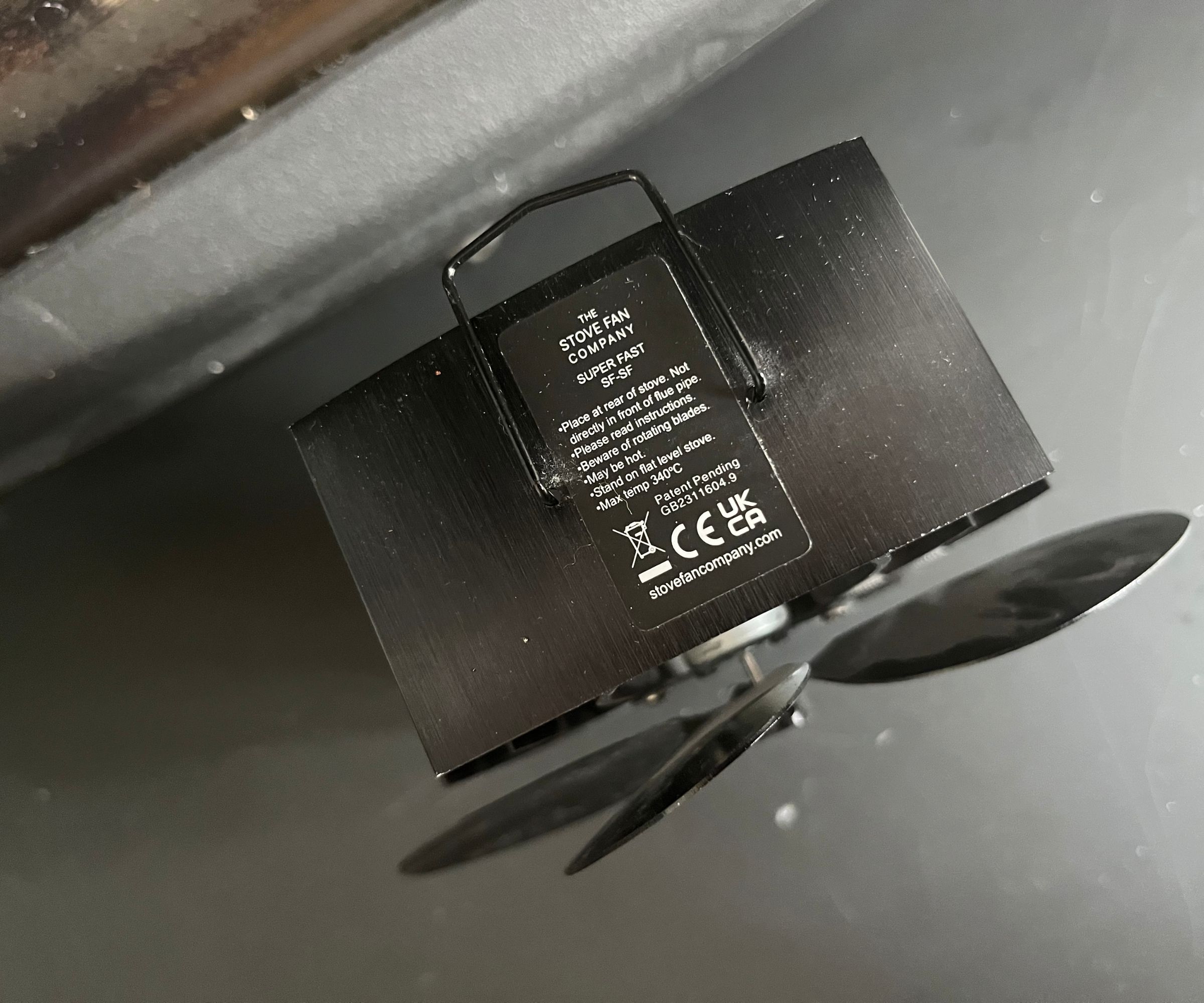
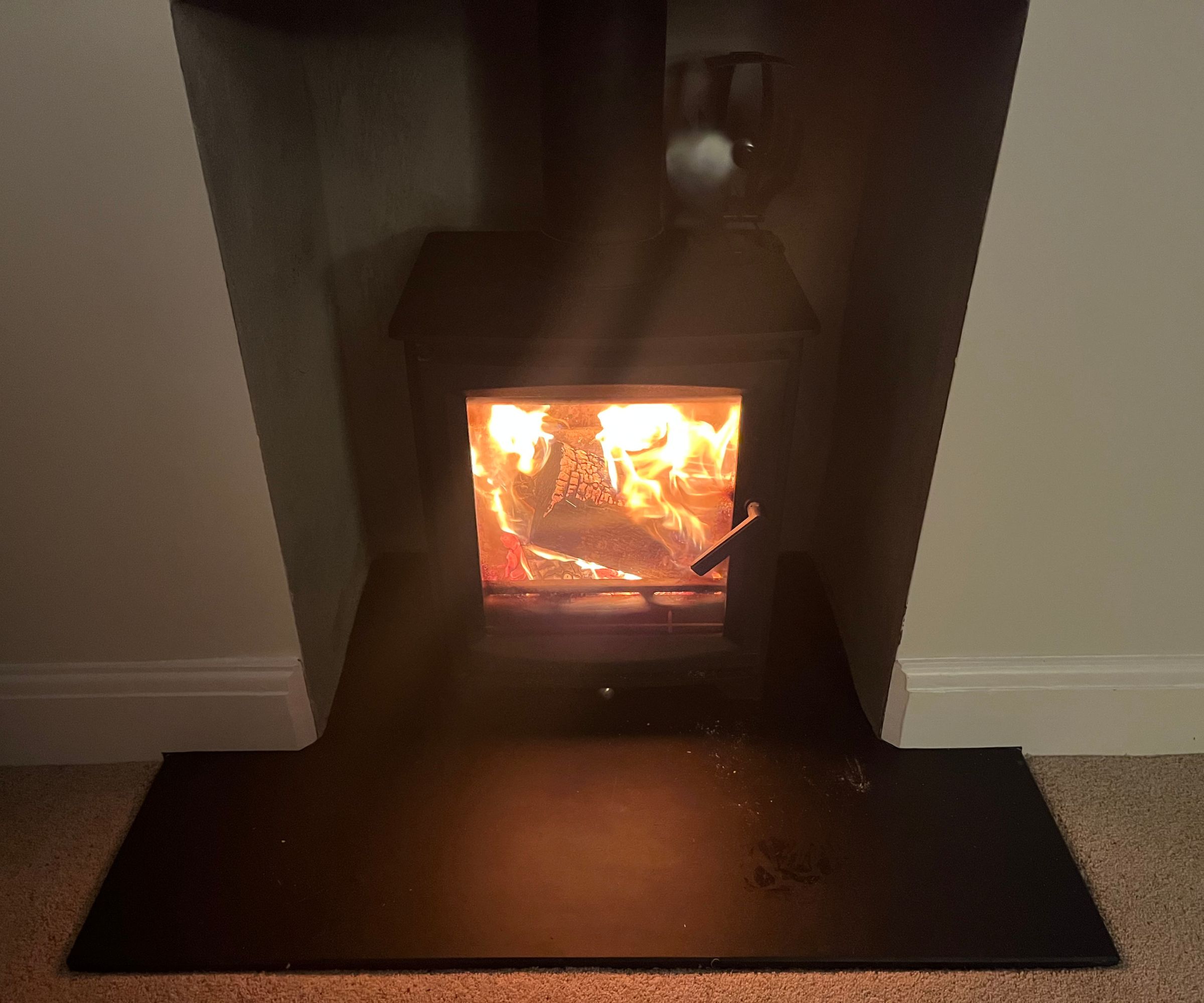
1. Forest Master SF Mini Stove Fan
Our expert review:
Specifications
Reasons to buy
Reasons to avoid
"The Forest Master SF Mini Stove Fan has been a resident in our home for a couple of years – almost as long as our log burner," says our ecommerce expert Jennifer Oksien. "We bought it because we didn’t feel the warmth of the fire (unless we were sitting next to or opposite it) so we thought, for £20, it was worth a try. And it was.
"It takes less than one minute for there to be enough heat rising from the burning stove to begin to turn the four blades. When they do start to spin we recorded a noise level of 37dB (equivalent to a soft whisper) and, after some time of the blades spinning around, we felt the heat start to creep into the colder spot of our living room.
"To look at, the stove fan looks like a natural pairing with our log burner. We chose it in Black to suit, but it’s also available in Steel Grey and Bronze. Made from aluminium, it feels like a solid piece of kit which hasn't incurred any damage during the time we’ve had it. It does attract dust though, and is tricky to keep clean because of the intrinsic design."
The best for small rooms
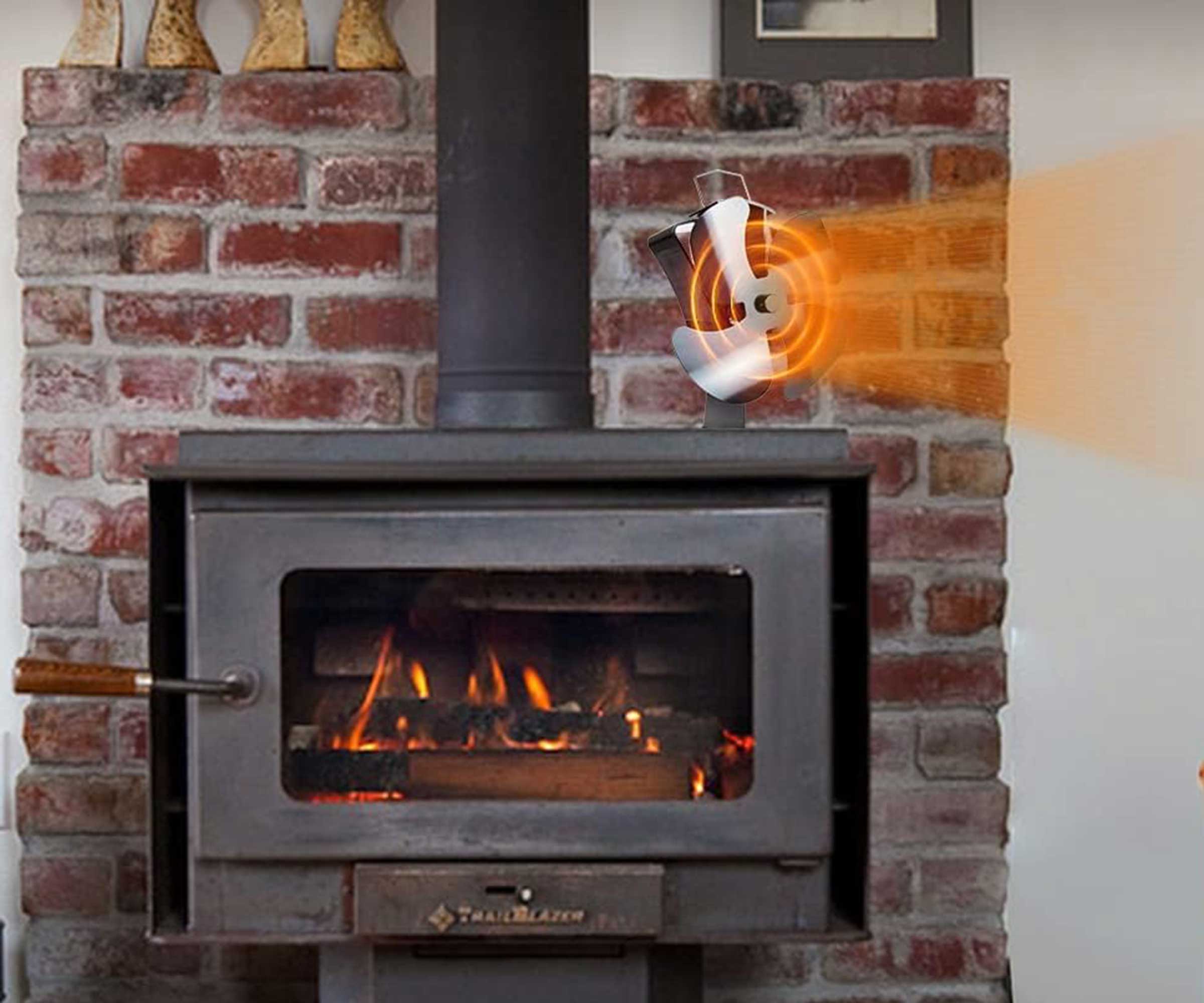
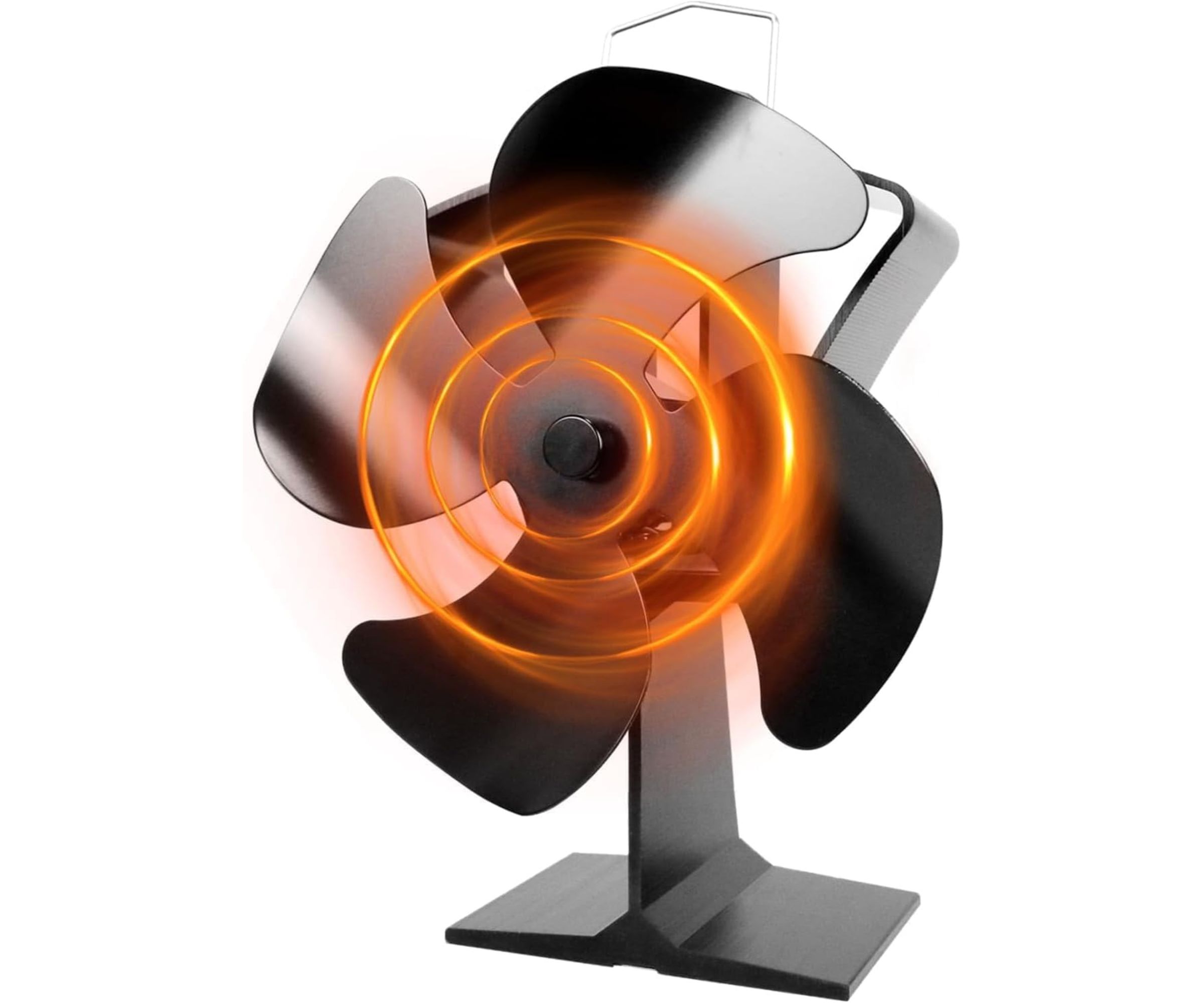
2. Tomersun 4 Blades Stove Fan
Our expert review:
Specifications
Reasons to buy
Reasons to avoid
This is an excellent, compact stove fan that would be ideal for those with small stoves with limited space above – for example those placed in an alcove.
As with all the stove fans listed here, no batteries are required for it to operate – it simply kicks in once the stove reaches 55°C and switches off once it reaches 350°C, getting slower or faster as required. Operation is quiet and the design is discreet.
One negative of the compact size of this fan is that it has a lower airflow range than some of the models on this list (150 - 180 CFM.), which could be an issue in larger spaces but should not be a problem for those with smaller rooms. And just like our top-rated stove fan above, you'll need to buy a stove fan thermometer (try Amazon) separately if you want to keep tabs on the temperature.
The best quiet operation
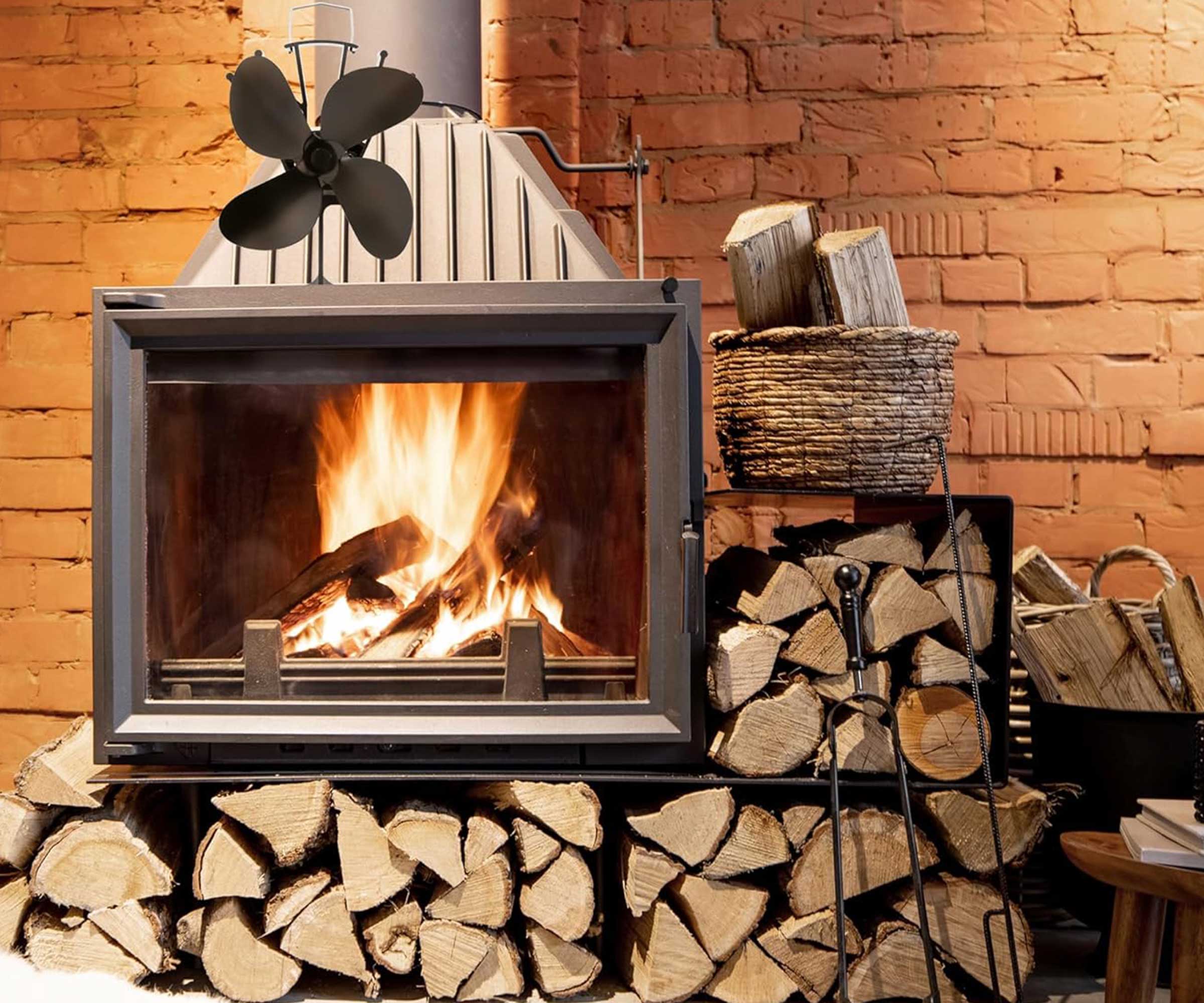
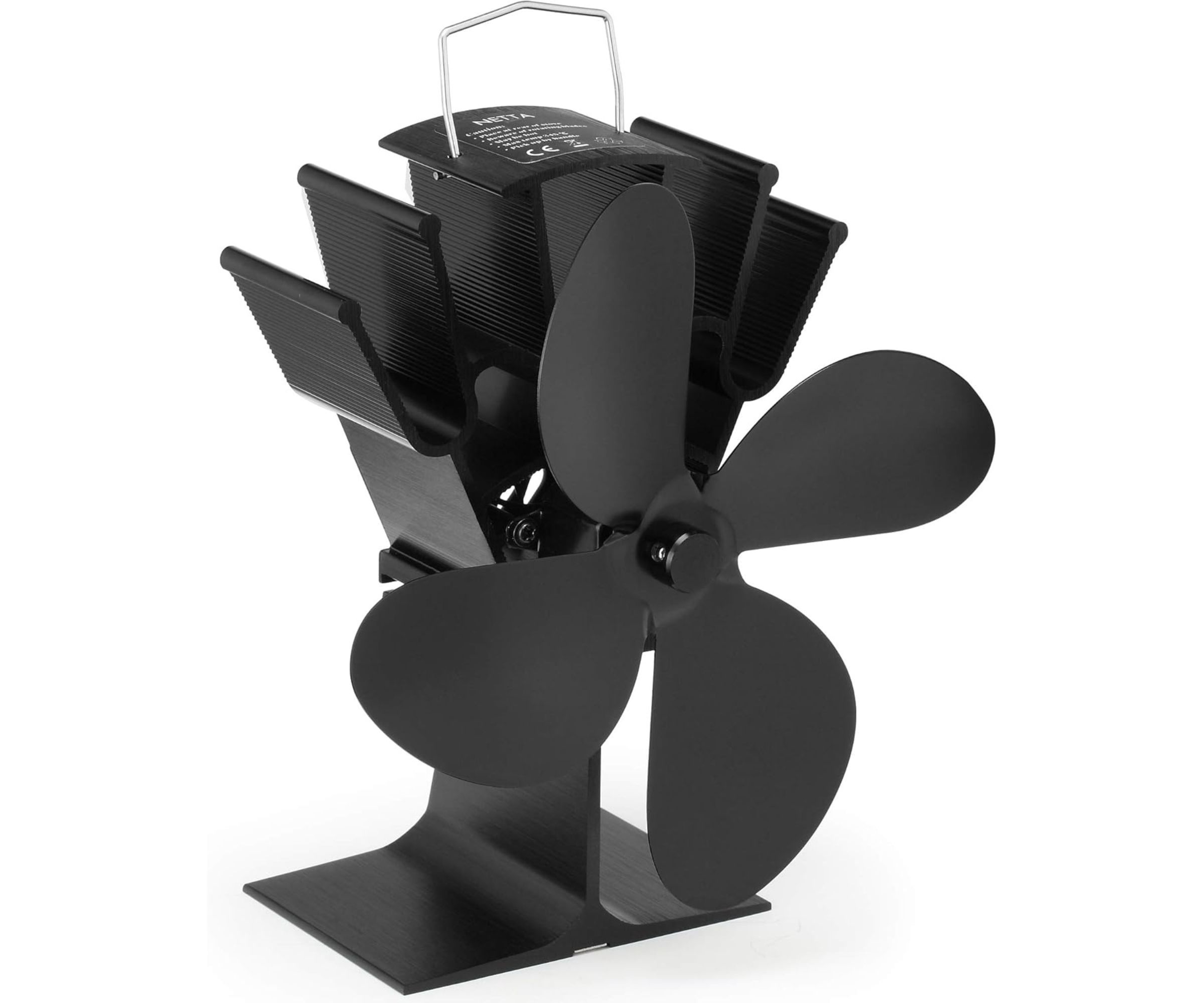
3. NETTA 4 Blade Woodburner Stove Fan
Our expert review:
Specifications
Reasons to buy
Reasons to avoid
A basic, yet highly effective stove fan. While it has no magnetic base, this fan does come complete with a very accurate temperature gauge – making it a great buy for its very reasonable price.
Users praised it for its quiet operation and its highly efficient heat distribution capabilities, despite its handy compact proportions.
The design of the fan is unfussy and would blend in with any interior scheme and with a range of stove styles.
The best budget buy
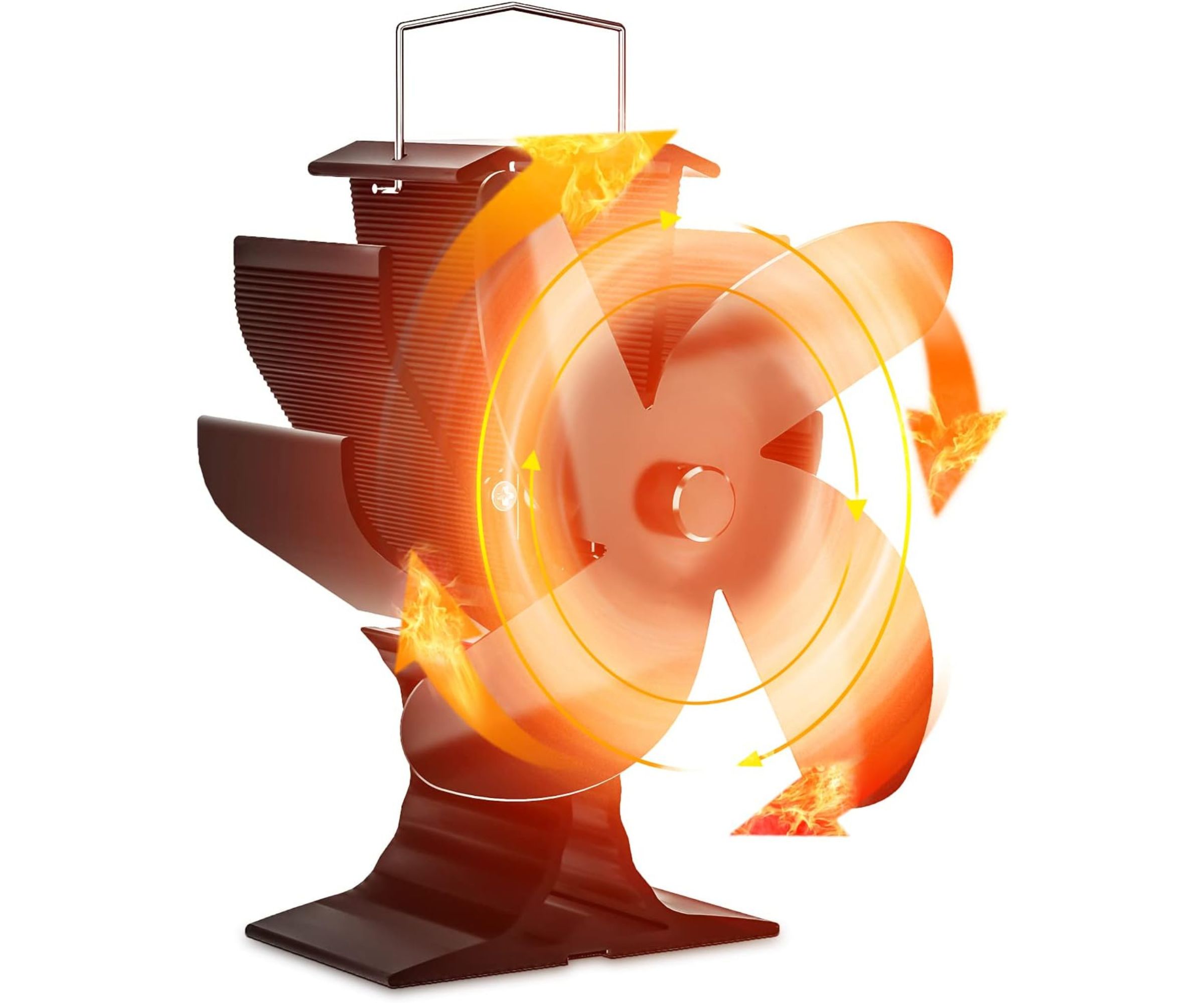
4. Signstek Wood Stove Fan
Our expert review:
Specifications
Reasons to buy
Reasons to avoid
Don't let the price tag of this six-blade fan lead you to believe that you will be compromising on efficiency – you won't be. It's six blades send the heat produced by your stove streaming out into the room so effectively you might be surprised at how quietly it operates – under 25dB in fact.
Like many of the other models here it features an overheat protection function offering peace of mind. The handy thermometer included lets you see the temperature your stove is running at which makes adjusting it a breeze.
The best for tight spaces
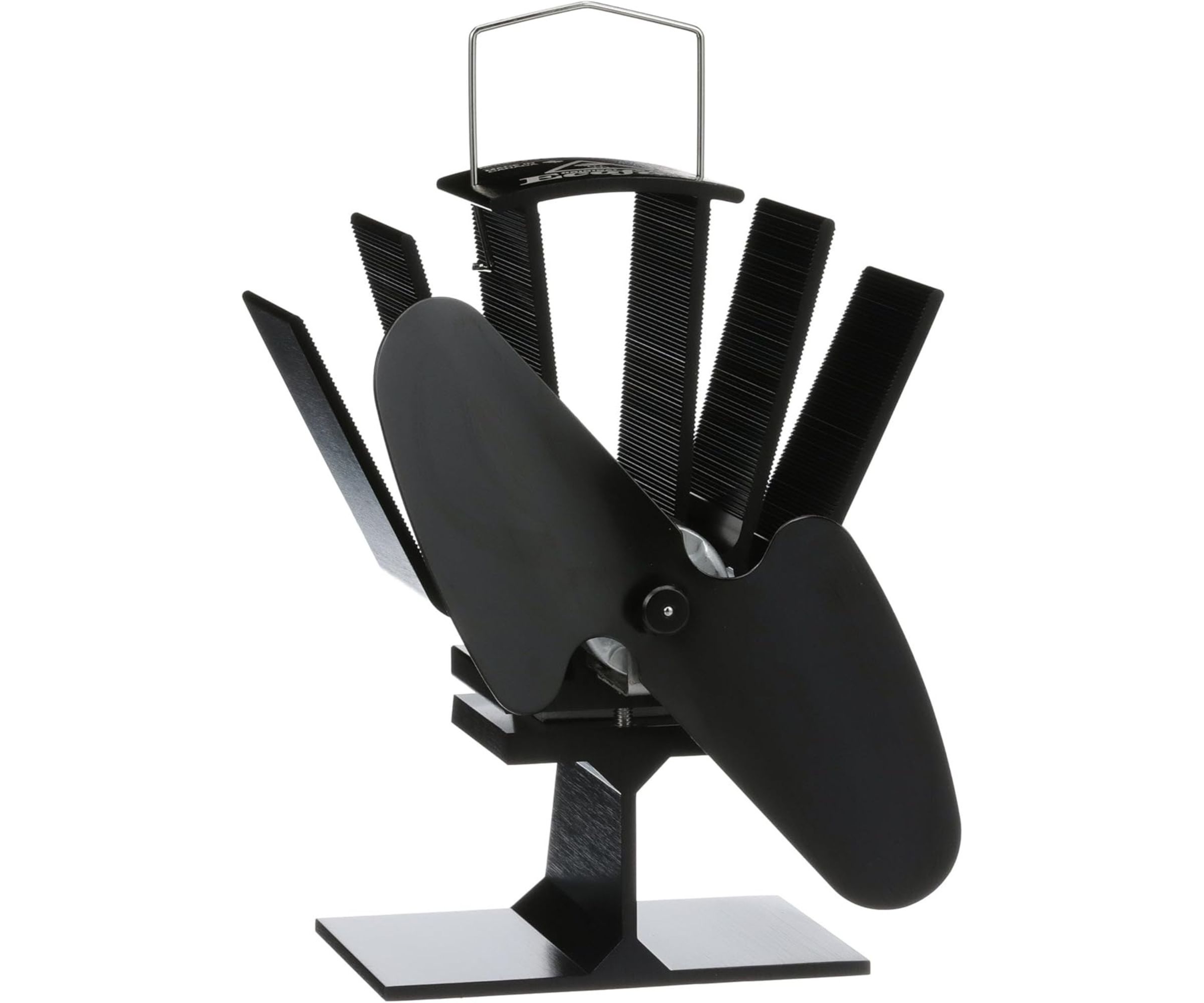
5. Ecofan Original Mini
Our expert review:
Specifications
Reasons to buy
Reasons to avoid
This is a truly tiny stove fan that would be ideal for anyone looking for a fan that would fit into an awkward or tight space, such as a little inglenook.
Despite its small size, the Ecofan Original Mini boasts quiet operation and has a maximum operating temperature of 345°C.
On the downside, its airflow of just 85CFM is lower than many of the other models here, largely due to its size and it having just two blades rather than the more common four or five.
That said, users still praised it for upping the heating capabilities of their existing stoves.
The best for a stylish finish
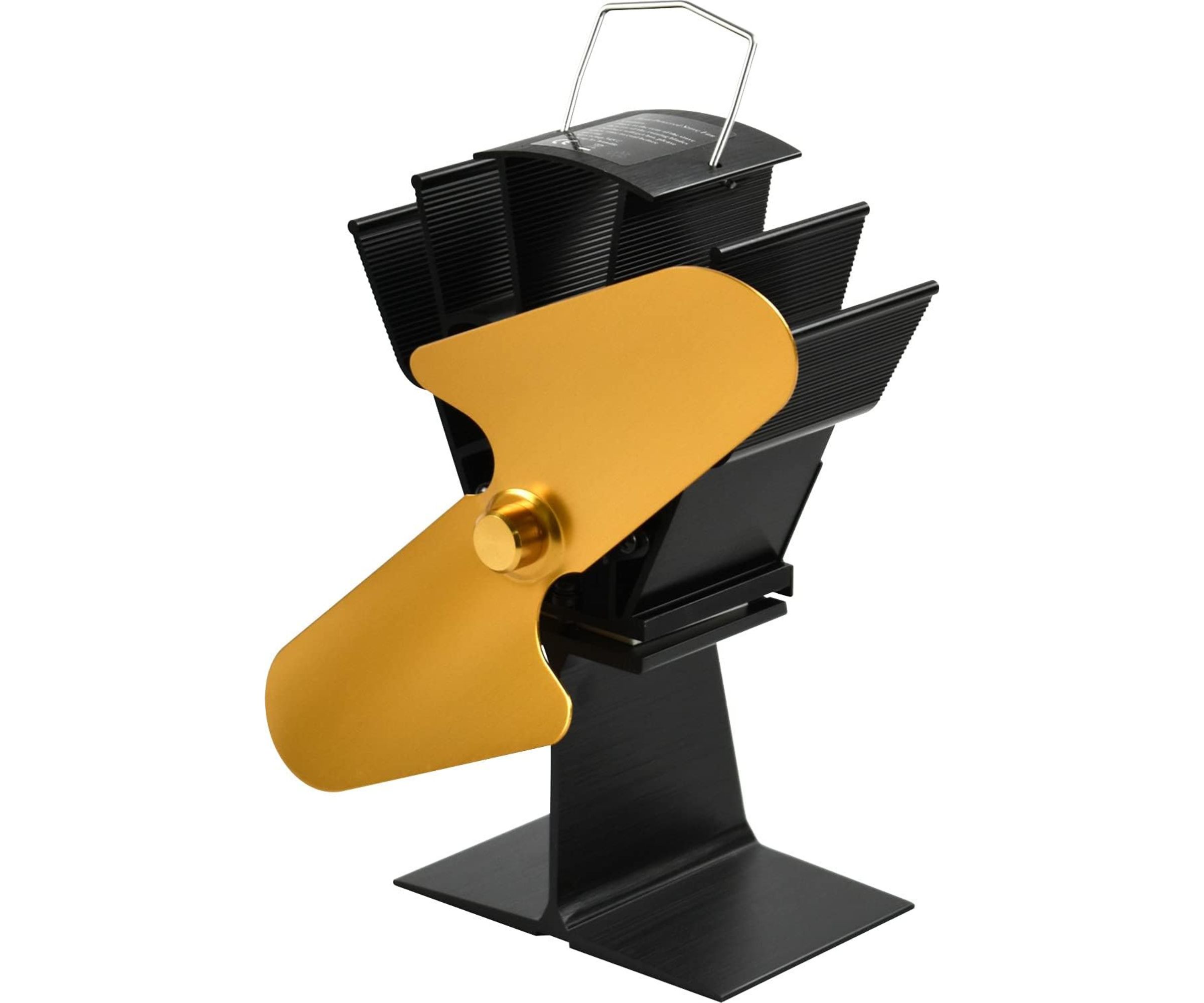
6. Sterling Ventures Fireplace Heat Powered Stove Fan
Our expert review:
Specifications
Reasons to buy
Reasons to avoid
This smart stove fan is ideal for those looking to add a stylish little touch to their stove at the same time as maximising its efficiency.
At just 500g it is lightweight – handy should you want to move it around to another stove in the house (although perhaps easier to knock over than some of the heavier fans we looked at.) You should also note that this is not one for those with gas or electric stoves as it is only suitable for log burners.
Contemporary appearance aside, the main benefits of this fan are its quiet operation, compact size and reasonable price tag.
The best premium option
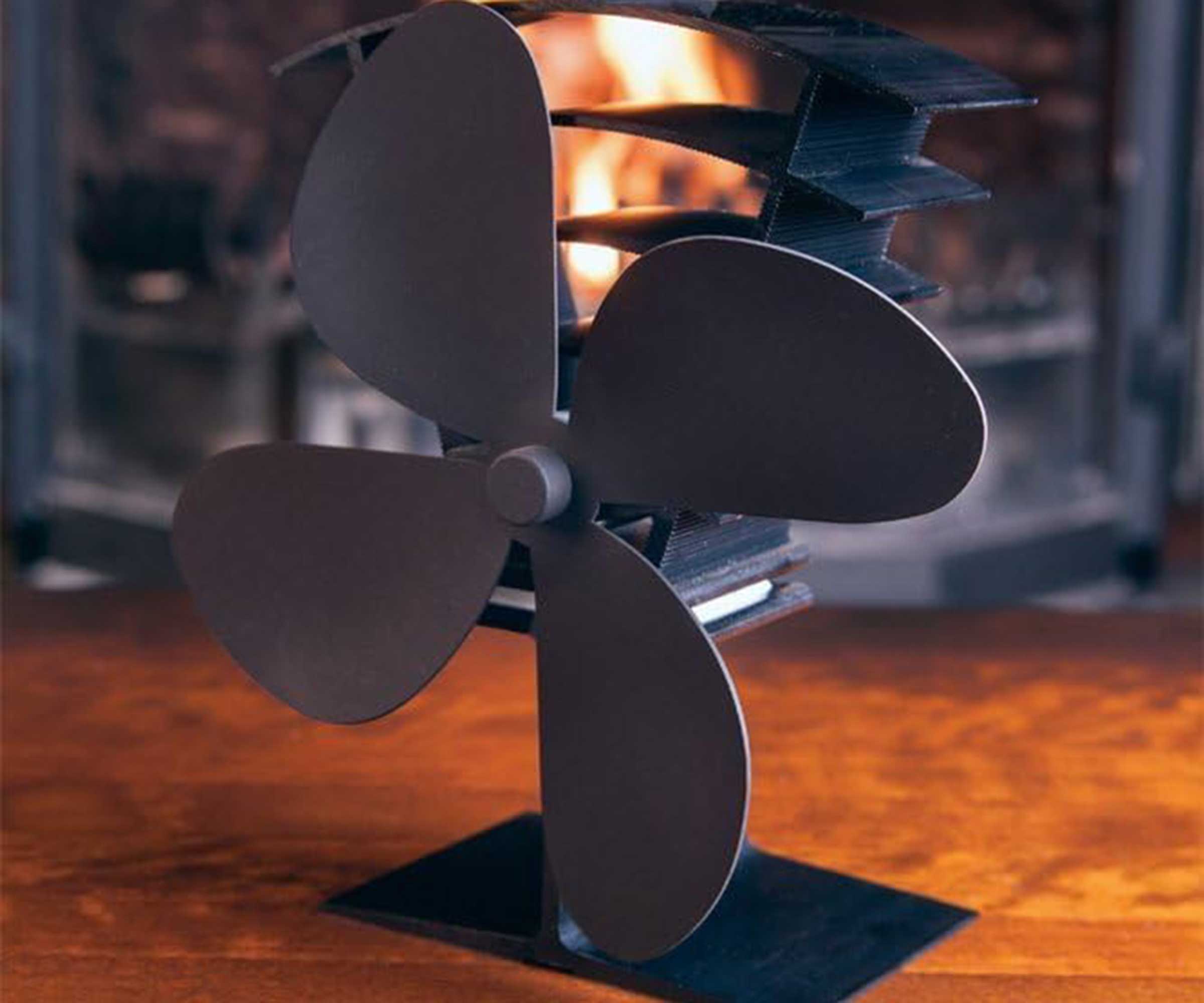
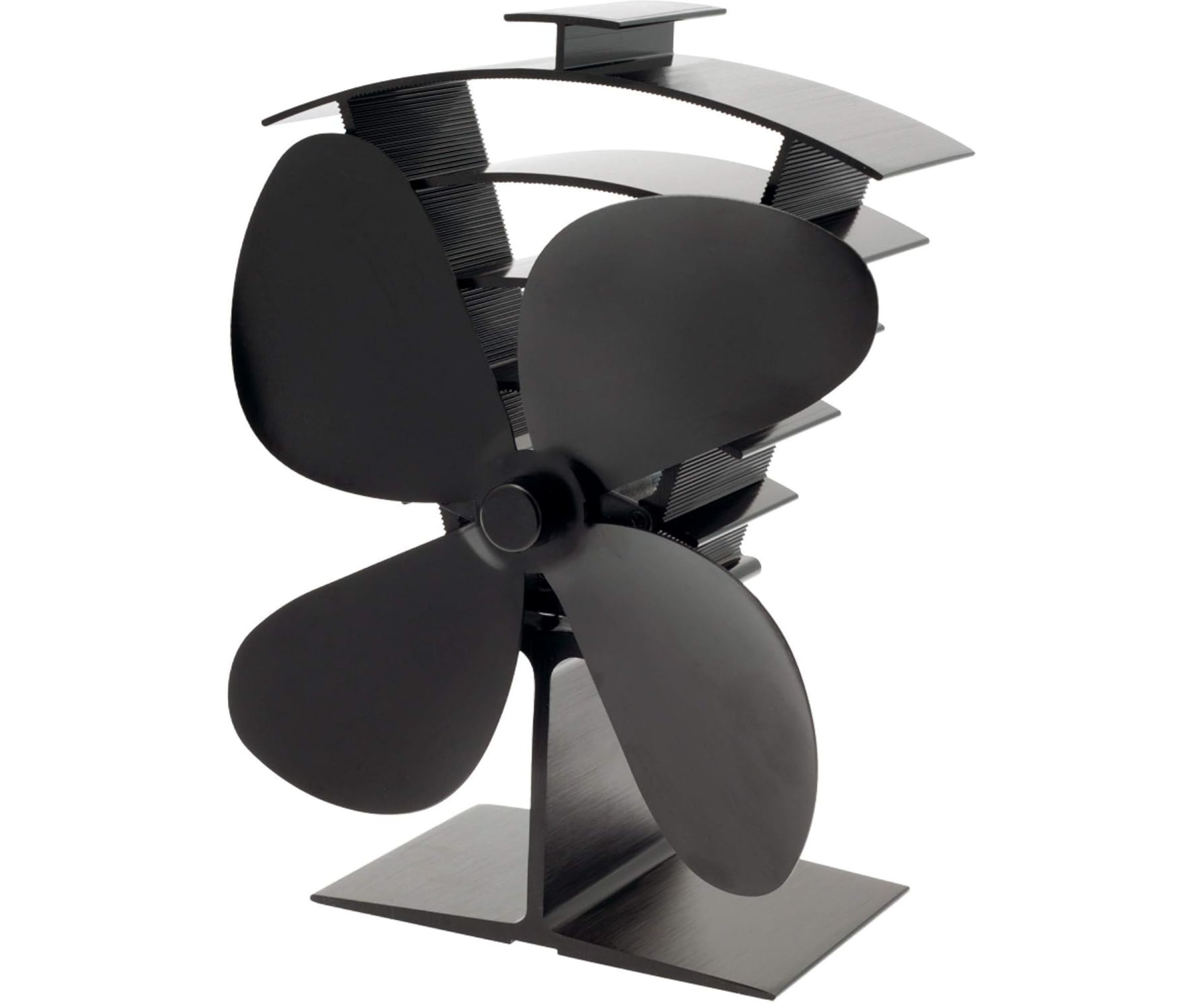
7. VALIANT (FIR361) Premium IV 4-Blade Stove Fan
Our expert review:
Specifications
Reasons to buy
Reasons to avoid
This four-blade stove fan might look a little unassuming but it has one of the most impressive airflow rates around when compared to other stove fans – expect 420 cubic feet per minute which is considerably more than some of the other fans on the list. This makes it ideal for those with more open plan layouts looking to up the efficiency of their stove.
This Valiant stove fan is strong and sturdy in construction and quiet to run, yet users praise how effective it is at pushing warm air around the home and how quickly it gets to work in order to do so.
How to choose the best stove fan
When choosing a stove fan that will be right for your home and will help you get maximum heat from your wood burner, you need to take into consideration how much space you have above your stove and how big the room your stove is located in is.
Airflow Range
Bigger rooms require stove fans with greater air-moving capacities – something measured in cubic feet per minute (CFM). Therefore, stove fans with a higher CFM will mean you will use less fuel for burning in your stove.
Magnetic
Fans with a magnetic base 'stick' to the stove via a clamp that fits onto your flue pipe instead of sitting flat on the stove top. This is a feature that can be very useful if your stove is slightly sloping or has an irregular surface.
Temperature gauge
A temperature gauge is an energy-efficient features which lets you monitor the heat and performance of your stove fan. You can use it to optimise its efficiency which will prevent against damage from overheating.
Blades
Stove fans vary in the number of blades they possess, but a 4-blade fan is widely considered to be very effective.
How many blades for a stove fan?
You can trust Homebuilding & Renovating.
Stove fans can have between two and six blades depending on how quickly you want to move air around the room. As a guide, opt for a stove fan with fewer blades if you wish to propel hot air from the stove around the room more quickly.
Expert Adele Brennan, Home Electricals Buyer, Domu Brands Ltd, explains: “If you want a stronger breeze for the heat to circulate more around the room, a stove fan with fewer blades will be the best choice, however the fan is likely to be louder.
“Stove fans with more blades tend to be quiet with a weaker breeze, so a fan with a high number of blades might be a good choice if you don’t need as much heat circulation.”

Adele Brennan has 11 years’ experience within the retail industry and currently specialises in home electrical products, covering kitchen, heating, cooling, and cleaning. Within her current role at Domu Brands, Brennan is responsible for sourcing and choosing high-quality products for retail. Domu Brands owns VonHaus, a producer of stove fans, tools and numerous other homewares.
Do I need more than one stove fan, or is one enough?
If you've recently installed a log burner, for most households one stove fan will be more than sufficient. However if you’re heating a large room and / or want to avoid any cold spots, then you may be better off with two stove fans placed at opposite sides of the stove. This could help to distribute the heat more evenly.
Another option to give your log burner ideas a boost is to land on a double stove fan which means that you’ll have double the number of blades compared to just one fan. You would just need to consider the space you have available on the top of the stove and around the flue pipe, and whether or not you’re prepared to hear the sound of it working in the background.
Where do I position my stove fan?
Your stove fan is best placed at the back of the stove, next to the flue and on a flat surface. This will maximise the heat distribution and reduce cold spots by drawing in cooler air from behind the stove and pushing warmer air into the room.
Placing the fan in front of the hot stove flue is a log burner mistake as it will not allow sufficient cool airflow, and placing it at the front of the stove will prevent the circulation of warm or cool air.
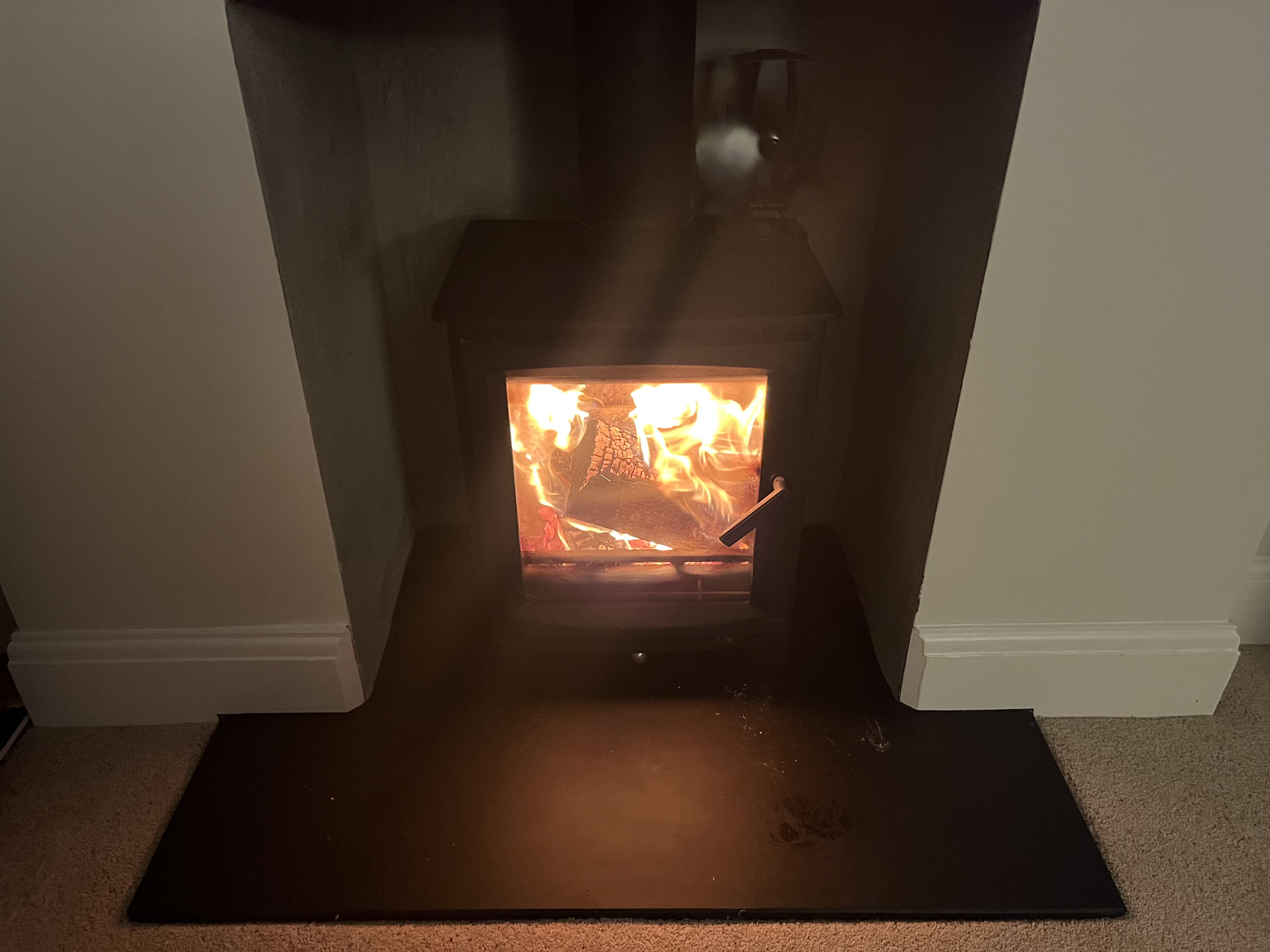
How we review stove fans
Here at Homebuilding.co.uk we like to get our hands dirty and trial as many products as possible, but in the instances where we aren’t able to, such as with some of the best stove fans, we leave no stone unturned to provide you with the crucial information you need to know before buying.
Our team is passionate about DIY and home improvement (which probably won’t be a surprise) so we already have knowledge about the brands that make these stove fans. Moreover, we have taken into account user reviews when compiling this buying guide.
There's a lot to consider to ensure you buy the best stove, and we’ve scanned the pros and cons of each stove fan in this buying guide to ensure you feel confident in choosing the right product for your home.
Bring your dream home to life with expert advice, how to guides and design inspiration. Sign up for our newsletter and get two free tickets to a Homebuilding & Renovating Show near you.
Natasha was Homebuilding & Renovating’s Associate Content Editor and was a member of the Homebuilding team for over two decades. In her role on Homebuilding & Renovating she imparted her knowledge on a wide range of renovation topics, from window condensation to renovating bathrooms, to removing walls and adding an extension. She continues to write for Homebuilding on these topics, and more. An experienced journalist and renovation expert, she also writes for a number of other homes titles, including Homes & Gardens and Ideal Homes. Over the years Natasha has renovated and carried out a side extension to a Victorian terrace. She is currently living in the rural Edwardian cottage she renovated and extended on a largely DIY basis, living on site for the duration of the project.

